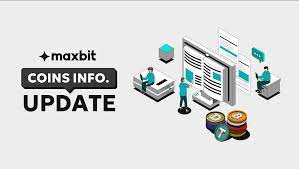Effective communication has become more vital than ever for enterprises to stay competitive and drive productivity. While traditional communication tools have served their purpose well, a paradigm shift has occurred, demanding modern enterprises to explore alternative solutions. This article delves into the realm of communication solutions beyond traditional tools, revealing the transformative power of cutting-edge technologies and strategies that revolutionise how businesses connect and collaborate. As we embark on this journey, we will navigate the intricate web of communication challenges modern enterprises face and illuminate the path towards a more efficient, transparent, and seamless communication ecosystem. It’s time to go beyond the ordinary and explore the extraordinary possibilities that lie ahead.
Navigating the Choice Between Different Communication Platforms
In navigating the choice between different communication platforms, it is crucial for enterprises to consider their specific needs and goals. For instance, instant messaging platforms have gained popularity for their ability to facilitate real-time communication and quick decision-making. They offer features like group chats, file sharing, and video calls, enabling teams to collaborate seamlessly. On the other hand, video conferencing platforms are ideal for connecting geographically dispersed teams and fostering a sense of face-to-face interaction. They can enhance communication by allowing participants to read visual cues and have productive discussions, similar to in-person meetings.
The emergence of Unified Communications as a Service (UCaaS) and Contact Center as a Service (CCaaS) solutions presents new opportunities for businesses to streamline their communication processes. UCaaS integrates various communication and collaboration tools into a single platform, offering features such as voice, video, messaging, and presence across multiple devices. Simultaneously, in the realm of customer interactions, CCaaS solutions provide businesses with cloud-based contact center functionalities, including omnichannel support, intelligent routing, and analytics. The choice between UCaaS vs CCaaS will depend on factors such as the size and nature of the enterprise, the specific needs of the teams, and the budget allocated for communication tools.
Ultimately, the choice between different communication platforms will depend on factors such as the size and nature of the enterprise, the specific needs of the teams, and the budget allocated for communication tools. By exploring the transformative power of cutting-edge technologies and strategies, modern enterprises can find communication solutions beyond traditional tools, enabling them to stay competitive and drive productivity in the ever-evolving business world.
Tailoring Solutions to Meet Business Needs
Tailoring solutions to meet business needs is crucial in today’s evolving technology-driven world. Traditional communication tools, such as phone calls and emails, are no longer sufficient to keep up with the demands of modern enterprises. To stay competitive and maximise productivity, businesses must embrace innovative technologies and strategies that empower efficient and effective communication.
One such solution is the implementation of cloud-based communication systems. These platforms enable seamless collaboration across various devices and locations, breaking down traditional barriers to communication. With instant messaging, file sharing, and video conferencing capabilities, teams can connect and work together in real time, regardless of their physical location. This flexibility allows businesses to adapt to the changing demands of a globalized marketplace and ensures that communication remains uninterrupted, even when faced with unexpected challenges.
Personalization plays a key role in tailoring communication solutions to business needs. Understanding the specific requirements and preferences of teams and individuals within an organization allows for customising communication tools. This can include features like automated workflows, project management integration, and personalized dashboards, all enhancing productivity and streamlining communication processes. Enterprises can maximise efficiency and improve overall performance by choosing communication solutions that align with their unique business needs.
Evaluating Integration and Flexibility
Evaluating integration and flexibility are crucial factors when considering communication solutions for modern enterprises. Integration refers to the ability of the communication tools to seamlessly connect with other existing systems and applications within the organisation. It allows for streamlining data sharing, collaboration, and workflow across different platforms. Evaluating integration is important as it ensures that the chosen communication solution can integrate effectively with existing software, such as customer relationship management (CRM) systems, project management tools, or email clients, to enhance productivity and efficiency.
Flexibility is another key aspect to consider when evaluating communication solutions. Modern enterprises operate in dynamic and rapidly changing environments, so the ability to quickly adapt and scale up or down is essential. A flexible communication solution should be able to accommodate the specific needs and preferences of the organization, offering customization options and allowing for easy configuration and updates. Additionally, flexibility also encompasses the ability to support different communication channels, such as voice, video, instant messaging, and file sharing, providing employees with options to choose the most suitable method of communication based on their requirements and the nature of the task at hand.
To ensure effective communication solutions for modern businesses, evaluate their flexibility. Use clear, concise language and active voice to make your message easy to understand. Organisations can improve communication and collaboration, drive productivity, and ultimately gain a competitive edge in today’s fast-paced business landscape by selecting solutions that offer robust integration capabilities and the flexibility to adapt to changing needs.











